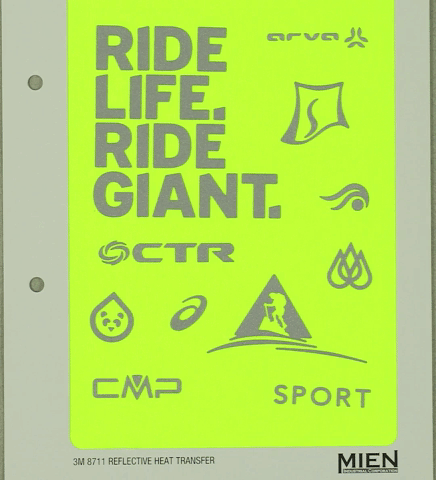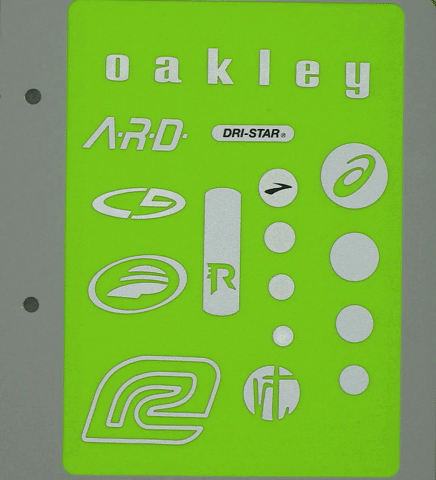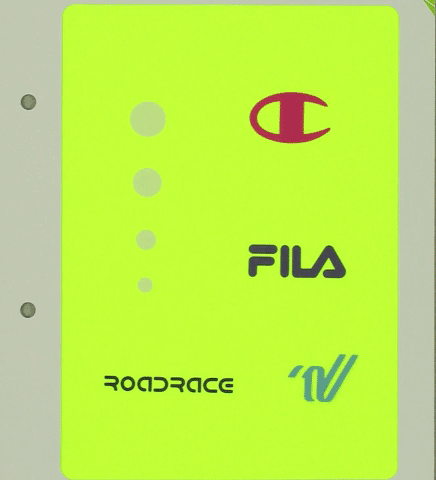






| Trim Solutions |

A reflective heat transfer is composed of glass beads translated into artwork that is then applied to a garment by means of a special heat transfer machine using a combination of temperature/ pressure/dwell time and peeling instructions. Reflective heat transfers are composed of glass beads and retroreflect when hit by direct light.
Reflective transfers can be made in a multitude of dye to match colors. They can be all sizes and offer an updated addition of color to apparel used outdoors.
Applications: A reflective heat transfer is a functional addition to a garment which is used as a safety precaution by enhancing the wearers visibility. They can be logo and/or generic. In place of standard silver reflective transfers or non reflective transfers they add a special element of visibility to activewear.
Common Pitfalls: Must be tested on the garments before production to insure that transfers will adhere to fabrics after application and washing. Factories must follow application instructions - temperature/dwell time/ pressure and peeling instructions - if any one of these is not followed the transfers will fall off after wearing or washing.
Click Here for more products.
A reflective heat transfer is composed of glass beads translated into artwork that is then applied to a garment by means of a special heat transfer machine using a combination of temperature/ pressure/dwell time and peeling instructions. Reflective heat transfers are composed of glass beads and retroreflect when hit by direct light.
Reflective transfers can be made in a multitude of dye to match colors. They can be all sizes and offer an updated addition of color to apparel used outdoors.
Applications: A reflective heat transfer is a functional addition to a garment which is used as a safety precaution by enhancing the wearers visibility. They can be logo and/or generic. In place of standard silver reflective transfers or non reflective transfers they add a special element of visibility to activewear.
Common Pitfalls: Must be tested on the garments before production to insure that transfers will adhere to fabrics after application and washing. Factories must follow application instructions - temperature/dwell time/ pressure and peeling instructions - if any one of these is not followed the transfers will fall off after wearing or washing.
Click Here for more products.